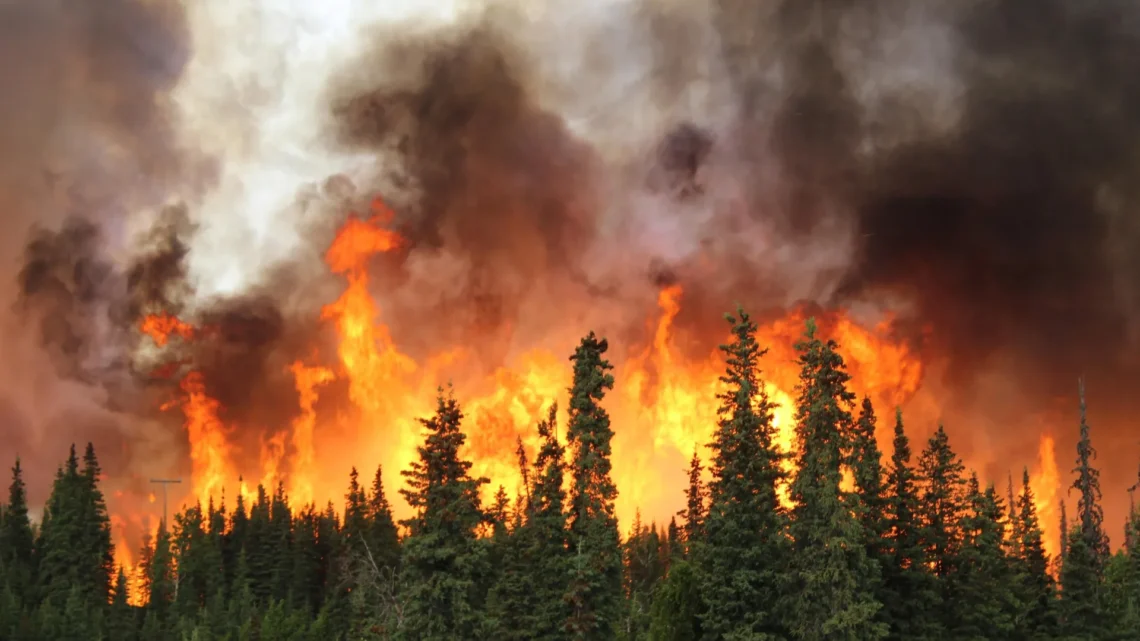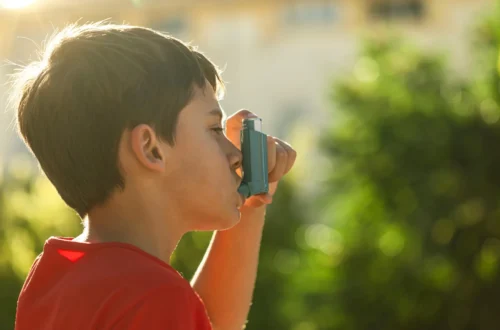Impact of Wildfires on Public Health
Wildfires currently affecting Canada and the Western United States are releasing significant amounts of smoke, substantially impacting the health of millions of Americans. Recent studies indicate that this ashy haze has become an increasingly regular phenomenon, with health implications that are greater than previously estimated.
Increasing Frequency and Severity of Wildfires
Traditionally, wildfires have been a natural part of life in the Western U.S. However, shifting climate conditions, characterized by warmer and drier weather, are contributing to larger and more frequent fire events. Smoke from these wildfires is dispersing over larger distances and remaining in the atmosphere for longer periods. A study published on September 18 in Nature by researchers from Stanford University suggests that continued global warming could result in approximately 30,000 additional deaths annually across the United States by 2050, as climate-driven increases in fire activity generate heightened smoke pollution.
“There’s a broad understanding that wildfire activity and wildfire smoke exposure are changing quickly. This is a lived experience for individuals on the West Coast over the last decade, and for those on the East Coast in more recent years,” stated Marshall Burke, senior study author and professor of environmental social sciences at the Stanford Doerr School of Sustainability. “Our research quantifies what these changes in exposure mean for health outcomes both now and in the future as climate conditions continue to evolve.”
Health and Economic Implications
The study highlights that no community in the U.S. is immune to the risks associated with smoke exposure. Researchers estimated that the health impact from wildfire smoke could amount to $608 billion in annual damages by 2050 if current emissions trends continue. This figure surpasses existing estimates of economic costs stemming from all other climate-related damages, such as temperature-related mortality, agricultural losses, and storm destruction.
Minghao Qiu, lead author and assistant professor at Stony Brook University, noted, “While larger increases in wildfire smoke activity are evident on the West Coast, significant smoke events have also impacted the Eastern and Midwestern U.S., often as a result of Canadian wildfires.”
Complexity of Wildfire Smoke Pollution
Fatalities attributable to wildfire smoke arise from inhaling a complex mixture of toxic substances. Studies indicate that exposure to these harmful pollutants can take a toll on public health long after the initial exposure, potentially contributing to fatalities up to three years later.
Researchers focused on fine particulate matter (PM2.5) within wildfire smoke, which can penetrate the lungs and enter the bloodstream. While the health effects of PM2.5 from various sources are well documented, the specific dangers associated with PM2.5 originating from wildfires are less understood. Emerging research indicates that wildfire smoke can contain a variety of harmful chemicals.
Linking Data for Future Projections
The researchers utilized U.S. death records from 2006 to 2019 in combination with measurements of ground-level smoke emissions and dispersal patterns to assess the relationship between smoke concentration and mortality. Using machine learning models, they estimated how variations in wildfire emissions in one area affected smoke levels in others and projected future health impacts associated with different climate scenarios through 2050.
Under a business-as-usual emissions situation, the findings indicate that excess deaths from PM2.5 exposure could rise significantly—from approximately 40,000 deaths annually between 2011 and 2020 to about 70,000 by 2050. The states projected to experience the highest increases in annual deaths related to wildfire smoke include California (5,060 additional deaths), New York (1,810), Washington (1,730), Texas (1,700), and Pennsylvania (1,600).
Addressing Climate Impacts
The study underscores the economic burdens associated with smoke-related fatalities, suggesting that even aggressive emissions reductions may not completely eliminate this health threat; deaths linked to wildfire smoke exposure in the U.S. are projected to exceed 60,000 annually by 2050, even with swift emissions cuts.
“Current climate impact assessment tools do not consider the influence of climate change on wildfire smoke and subsequent mortality,” Qiu pointed out. “Our findings reveal a significant gap in climate models, akin to excluding a vital character from a film.”
Strategies for Mitigation
Proactive measures by public health officials and local communities can help mitigate these risks. Improved indoor air filtration systems can reduce exposure for vulnerable populations, while prescribed burns and other fuel management strategies may diminish both wildfire severity and smoke production.
“Our understanding of who is vulnerable to smoke exposure has expanded. It includes pregnant individuals, children in schools, and those with respiratory conditions,” Burke remarked. “This study highlights a collective burden of smoke exposure affecting diverse populations across the U.S.”
Key Health Takeaway
Wildfire smoke presents significant health risks, exacerbated by climate change, and impacts a wide range of vulnerable populations. Mitigating these risks through improved air quality measures and informed public health strategies is essential for protecting community health.
Burke is also a professor (by courtesy) of earth system science and deputy director at the Center on Food Security and the Environment. He is a senior fellow with various Stanford institutes. Additional Stanford co-authors include Jessica Li, Renzhi Jing, and others from multiple institutions.
This research received support from the Keck Foundation, Stanford’s Center for Innovation in Global Health, Stony Brook University, and other organizations.





